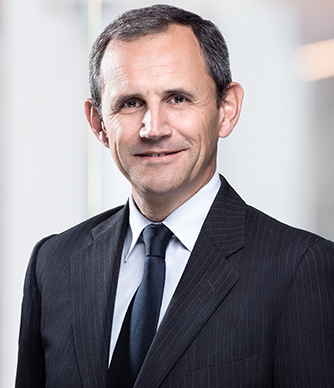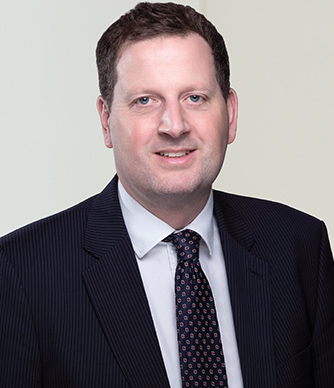Mitsubishi UFJ Financial Group’s EMEA heads of corporate and investment banking talk to Danielle Myles about the firm’s judicious approach to assessing new clients and its unique partnership with Morgan Stanley.
Sitting in Mitsubishi UFJ Financial Group’s (MUFG’s) London offices, it is clear the bank’s regional priorities are a world away from those of its European-headquartered competitors. While many corporate and investment banks (CIB) are off-boarding clients, closing offices and exiting non-core markets, MUFG’s Europe, Middle East and Africa (EMEA) business is firmly focused on growth.
Part of that focus is about improving visibility. Historically, MUFG’s banking subsidiary was known as Bank of Tokyo Mitsubishi UFJ or BTMU. But under a global rebranding strategy launched in 2014, all of the parent’s foreign entities became known as MUFG. A single name helps build a global franchise, and reinforces the banking unit’s close co-operation with the securities division (formerly known as Mitsubishi UFJ Securities).
Room to grow
A more tangible part of the bank’s EMEA growth strategy involves its client base. While many CIBs have more than 1000 EMEA clients, MUFG is banking around 500 throughout the entire region. Slightly more than four-fifths are corporates, and the rest are a combination of bank and non-bank financial institutions. MUFG’s CIB bosses are keen to expand this footprint.
“We’d like to grow our business with existing corporate clients, and we’d like to on-board more corporate and financial institution clients,” says Sébastien Rozès, head of corporate banking for EMEA. “Over the last couple of years we’ve brought in about 30 clients each year, and we intend to continue this growth.”
That will continue at a measured pace, however. The Japanese parent’s prudent approach to banking, which helped MUFG escape the financial crisis relatively unscathed, means it is extremely selective when assessing new clients. “As a Japanese bank, we plan,” says Mr Rozès. “If you present a potential on-boarding situation and it doesn’t fit with the bank’s strategy, doesn’t have an acceptable credit profile or doesn’t match our product range, you stand no chance.”
The on-boarding committees’ tough requirements result in a culture of self-discipline regarding new clients. While MUFG will take on transaction-specific mandates, doing so is not the preferred route. Firms usually become clients only after the bankers have built a relationship with senior management, become familiar with the credit risk and identified what services they may need.
MUFG prides itself on being a relationship-driven bank, and is focused on meeting clients’ needs for the long term. As a result, decisions regarding its investment banking offering are not taken lightly. “We do not look to enter or exit businesses in the short term. If we enter a business, we intend to be there supporting our clients for the longer term,” says Phil Roberts, MUFG’s newly appointed investment banking chief for EMEA. “We are well capitalised and have good liquidity so are in a position to support clients across a range of products, including through the provision of balance sheet.”
A broader strategy
As the world’s fourth biggest bank by assets, balance sheet is something MUFG – alongside the other Japanese majors – has always had on its side. But the bank is moving on from its former situation in which it essentially provided only balance sheet-backed solutions. The EMEA bosses’ overarching goal is to deliver a fully-fledged, sustainable and holistic CIB strategy. “That means providing access to capital and funding, but not just through our balance sheet,” says Mr Rozès. “We are also pushing capital-lite solutions via capital markets solutions (debt capital markets, hedging, structured products) and working capital optimisation (trade finance, cash management) throughout our 50-countries network.”
MUFG’s Tokyo headquarters has taken a keen interest in the markets overseen by Mr Rozès and Mr Roberts. Unlike the Americas and Asia Pacific, MUFG has no retail operations in EMEA and there is a group-level objective to expand in the region. Late last year MUFG became the first Japanese bank to receive a licence to operate in Saudi Arabia. The Riyadh office, which could open as soon as 2018, will increase MUFG’s Middle East presence, adding to its operations in Qatar, Bahrain, Iran, Abu Dhabi and Dubai. In 2015 it became the first Japanese bank to receive an Islamic finance licence in the Middle East, and one year later it worked on the $1.75bn limited-recourse financing of the world’s largest air separation unit, located in Saudi Arabia’s Jazan Economic City.
The bank’s African credentials received a boost last November with the appointment of Christopher Marks as head of emerging markets EMEA. Mr Marks spent more than 10 years at BNP Paribas, eventually becoming global head of debt capital markets, and was most recently a senior advisor at the African Development Bank.
Project finance
MUFG’s banking activities in EMEA are focused on structured finance, securitisation, syndication, commodity and structured trade finance, leveraged finance and debt advisory. It has a strong corporate bond platform and is looking to push into non-investment grade, but it is perhaps best known for project finance. The bank regularly tops funding league tables, and its derivatives, advisory and structuring expertise means it can offer sponsors the full suite of services.
MUFG’s commitment to project finance sharply contrasts with the trend of banks withdrawing from the market post-crisis. Conventional wisdom was that Basel III capital charges made it prohibitively expensive to lend at the tenors needed by project sponsors, but Mr Roberts is quick to challenge this theory. He points out that the US and Australia are technically mini-perm markets (typically five-year loans that are taken out by a bond or, in the US, a term loan B) while many of MUFG’s other project finance deals are limited to 10- to 12-year tenors.
“We will do some long-term lending but we also look to distribute some of it, and within the context of our global business it’s only a small proportion of our portfolio,” says Mr Roberts. “That said, if it’s where our clients like to play, we are able to support them whereas other banks may not.”
Nevertheless, he sees an increasing number of banks re-entering deals, and at attractive pricing. “Banks may have concerns over the capital allocation for project finance at this point in time, but many are still playing in this business. We see a lot of competition from banks who say they don’t do a lot of project finance, but they do still do it in their core markets, and on quite competitive terms, particularly in euros.”
Funding by non-banks continues to grow, but while publicly-listed project bonds are receiving the most attention from policy-makers and the media, Mr Roberts sees more momentum among institutional investors looking to fund projects privately. This can be in the form of a loan, note or private bond, and the lenders range from asset managers to sovereign wealth funds.
“These aren’t highly visible deals, but it’s where a lot of our work is,” says Mr Roberts. “Institutional investors like the fact we have a strong origination platform and are happy that we are also willing to commit some capital to the deal. They take comfort from our structuring and due diligence expertise, and that we are keeping skin in the game.”
A collaborative mindset
An area where the bank is not active in EMEA is mergers and acquisition (M&A) advisory, thanks to its unique arrangement with Morgan Stanley. Following MUFG’s $9bn investment in the US bulge bracket at the height of the financial crisis, the two banks developed a series of co-operation agreements that encompass many of their businesses. In some regions it is cemented via a joint venture, but in EMEA the arrangement is less formal; essentially, it paves the way for them to collaborate on a deal-by-deal basis. The idea is that each bank can leverage off their complementary strengths. For Morgan Stanley, that’s M&A and equity capital markets (ECM), while for MUFG it is risk management and certainty of funds.
“When the client is open to it, we can join forces to facilitate a transaction. For instance, Morgan Stanley may be advising on an acquisition or spin-off, or coordinating an initial public offering (IPO), and MUFG is relevant in its de-risking or financing capabilities,” explains Mr Rozès. “Vice versa when the client is amenable to the idea MUFG could provide financing jointly with Morgan Stanley which could make Morgan Stanley eligible for some M&A or ECM transactions.”
It happens, he says, when the planets are aligned: “First, it must create value for the client, and it must make sense for both banks.” The arrangement has seen good momentum over the past 18 months, with around 30 instances of collaboration and five to 10 transactions. Examples from last year include Philips Lighting’s €750m IPO on Euronext Amsterdam, and Shire’s $32bn acquisition of Baxalta.
Such a partnership may not suit all banks, but MUFG’s EMEA chiefs’ career paths show they have the flexibility and adaptability to make it work. Mr Rozès was a capital markets banker for 12 years before moving into coverage, while Mr Roberts started his career as a chemical engineer. Under their guidance, MUFG’s prospects in the region – both alongside Morgan Stanley and via its independent work – are looking bright.




